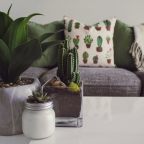
7 tips for deciding where to put your garden shed
If you’ve decided that you want a garden shed, the biggest question will really be where to put it -ignore the smart alec who said, “in the garden”. This will depend on a number of factors, from what you wanted to use the shed for to what material your shed is made from to your current garden layout.
- What are you using the shed for?
If the shed is simply going to be used for storing your garden furniture during winter or as a place to keep all garden equipment and household tools away from little hands, then it might not matter where you place it.
However, if you’re going to be using it as a proto office, craft space, or any other extra room, then you need to think about how you can run cables to provide electricity and heating to the shed. In this case, it might be easier to place the shed nearer the house.
Important: Wherever you decide to place the shed, hire a qualified electrician to run the cables for you.
- How big is your shed?
This will largely depend on what you’re using the shed for, but as a general rule of thumb, it’s not good to put a very large shed close to your house as it could block the natural light.
Plus, a big shed could require planning permission and those granting the permit can be very precise about where your shed should go.
- Is the area level?
Building your shed on level ground is important because numerous problems can arise on uneven ground. It could be hard to assemble, the doors may not fit right, and depending on the material, the walls could warp.
- What material is it made from?
Garden sheds made from wood have plenty of good qualities, but they’re awfully susceptible to rot, even when you put the chemical preservative on. That’s why you can’t place them near trees, climbing plants, or wooden fences because this could increase the chances of damp getting into the shed. Metal sheds, like those from www.qualitysteelsheds.co.uk, don’t rot and can be placed near plants without worry.
- How secure is it?
If you’re concerned about thieves, try to place your shed near enough to the house that you’d be able to see a motion-sensor light come on if someone was out there and they weren’t supposed to be.
For added security, we recommend:
- Putting a padlock on your door
- Hanging curtains in any windows
- Spreading a layer of gravel around the shed
- Is there room to get all around the shed?
Sheds can require maintenance from time to time, whether you need to varnish the wood or replace a glass window after a storm. With that in mind, it’s important to allow yourself (or a professional) enough room to manoeuvre around the shed and do the job safely. A two-foot perimeter should do the trick.
It’s a good idea to put the shed on a paved area to allow for safe maintenance and you can even put paving slabs from the shed to your back door to ensure you’re not stepping in mud.
- Where not to put your shed
Of course, there are some areas that we really recommend not putting your shed. This includes:
- An area prone to water logging or flooding because the ground may not be stable enough to support the shed and you’ll want to avoid tracking in mud every time you step inside
- Under trees, as even if you choose a metal shed that won’t rot, swinging or falling branches can cause damage, as can pesky tree roots
- The garden’s only sunny spot, because you’ll have no place to sit on summer afternoons and it might get a little too hot if you’re storing chemicals (i.e. paint stripper or fertilizer) in there
- Near fences, as if the shed roof overhangs it could create a boundary issue with your neighbours or cause water, leaves, etc, to fall down in a very specific part of their garden.
Hopefully, this has helped you decide where to put your shed for optimal use, without detracting from the garden.

















